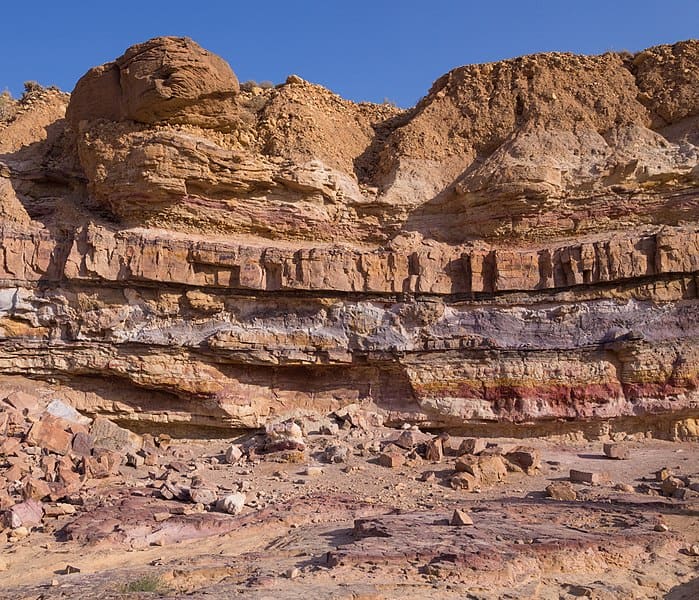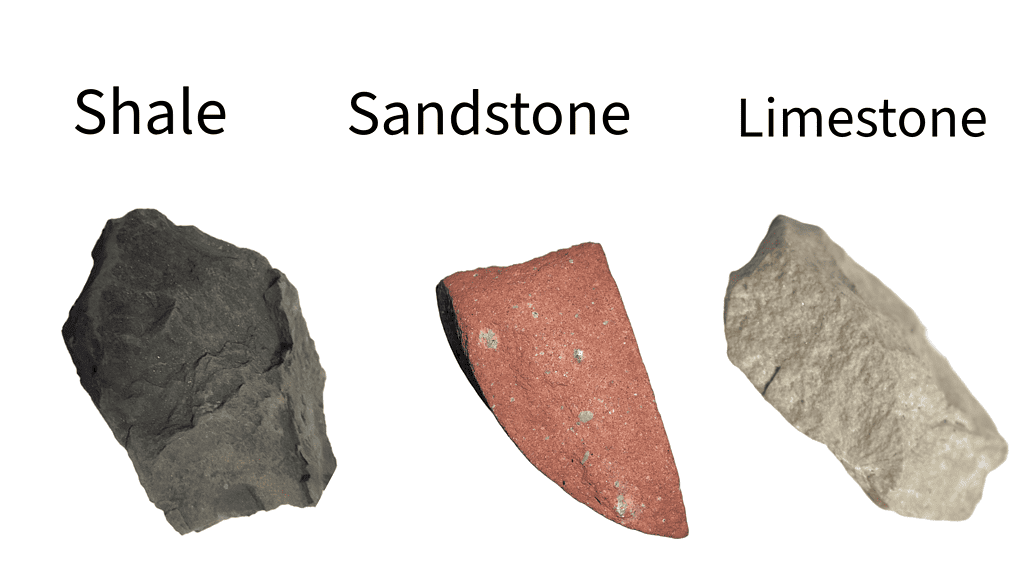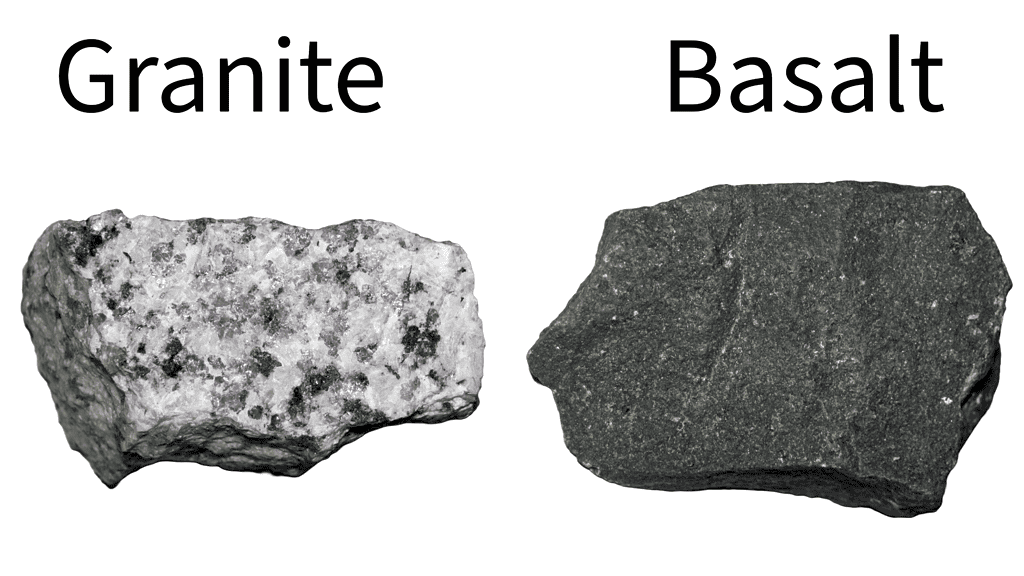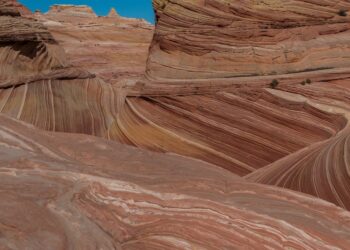
The most common types of rock can help us understand the history of our planet.
Rocks are more than just the solid ground beneath our feet. In geology, rocks are the storytellers of Earth’s history, revealing the planet’s past and guiding our understanding of its future. Some stories are unique — and there are some unique types of rocks to go along with them. However, other stories are more common, and they create common types of rock. Here are some of these widespread rocks.
The most common rocks
Before we get into more details on why these rocks are common and what’s interesting about them, here is a short list of the most common rocks you’re likely to encounter.
- Granite (Igneous)
- Core of many continents, widely used in construction and sculpture for durability and aesthetic appeal.
- Chalk (Sedimentary)
- Composed mainly of calcite from microscopic marine organisms, symbolizes historical and academic uses in writing and drawing.
- Claystone (Sedimentary)
- Made primarily from fine clay particles, often used in ceramics and known for its plasticity when wet.
- Basalt (Igneous)
- Constitutes the majority of the ocean floor, forms from rapid cooling of lava at mid-ocean ridges.
- Sandstone (Sedimentary)
- Indicates ancient environments like deserts or beaches, used extensively in building due to strength and ease of work.
- Limestone (Sedimentary)
- Forms in marine environments, often contains fossils providing clues about past life on Earth.
- Slate (Metamorphic)
- Transforms from shale under high pressure and temperature, used in roofing and flooring for its fine layers and durability.
- Travertine (Sedimentary)
- A form of limestone deposited by mineral springs, especially hot springs, used in building and as a decorative stone in architecture.
- Mudstone (Sedimentary)
- Similar to shale but without the fissility, commonly found in riverbeds and floodplains, and used in brick making.
- Marble (Metamorphic)
- Transforms from limestone or dolomite, valued for beauty in sculpture and architecture with unique veined patterns.
- Shale (Sedimentary)
- Made from compacted mud, silt, and clay, the most common sedimentary rock and source rock for slate and petroleum.
- Gneiss (Metamorphic)
- Formed from high-grade metamorphism of existing rocks, noted for distinctive banding patterns and used in construction and decorative arts.
- Conglomerate (Sedimentary)
- Composed of rounded pebbles and rock fragments, indicates past environments with strong water currents.
- Diorite (Igneous)
- Coarse-grained, similar to granite but with less quartz, used historically for tools and sculptures due to its hardness.
A primer on the main types of rock

Before delving into specific rocks, it’s crucial to understand the three primary rock types: igneous, sedimentary, and metamorphic. Each type forms through different processes, shaping the Earth’s crust (and mantle) in unique ways.
Widespread Depositional Processes: Sedimentary rocks form from the accumulation of sediments, which can originate from the weathering and erosion of any existing rock type. These processes are universal and continuous on the Earth’s surface, contributing to the widespread formation of sedimentary rocks.

Igneous rocks form from the cooling and solidification of magma or lava. When magma cools slowly beneath the Earth’s surface, it forms intrusive igneous rocks like granite. In contrast, when lava cools rapidly on the surface, it forms extrusive igneous rocks like basalt.
Sedimentary rocks are formed from the accumulation and compression of mineral and organic particles over time. These rocks, like sandstone and limestone, are often layered, recording Earth’s history.
Metamorphic rocks arise from the transformation of existing rock types due to high pressure, high temperature, or both, deep within the Earth. This process, known as metamorphism, alters the rock’s mineral composition and structure.
Out of these, sedimentary rocks are by far the most common on the planet’s surface. In fact, over 70% of the rocks on the surface (on continents and under the oceans) are sedimentary.
The most common types of sedimentary rocks
Shale is probably the most common type of rock on the Earth’s surface; of course, it’s also the most common sedimentary rock.
Shale is a fine-grained, sedimentary rock composed primarily of clay and silt-sized particles. It is characterized by its thin layers or bedding planes, often making it easily fissile and enabling it to break into thin, parallel layers. Shale is typically gray but can vary in color depending on its mineral content. It forms in quiet water environments such as lake bottoms, river deltas, and deep marine areas where fine sediments can accumulate and compact over time. Shale plays a critical role in the natural world and in human industry. It is the source rock for many natural gas and oil deposits, as the organic material trapped within its layers can, under the right conditions of heat and pressure, generate hydrocarbons. Additionally, shale is used in the manufacture of bricks and cement and serves as a raw material in the ceramics industry for making items such as tiles and pottery. Its abundance and varied uses make shale an important rock in both geological and economic terms.
Sandstone is another very common sedimentary rock. It is formed from compacted sand particles. Its layers often tell stories of ancient environments, from deserts to beaches. This rock is not only a geological record keeper but also a widely used building material.
Limestone, primarily composed of calcite, forms in marine environments. It is often rich in fossils, offering insights into ancient ocean life. Limestone’s versatility makes it a key material in construction and agriculture.

Why are sedimentary rocks the most common?
Sedimentary rocks form from the accumulation of sediments, which can originate from the weathering and erosion of any existing rock type. These processes are universal and continuous on the Earth’s surface, contributing to the widespread formation of sedimentary rocks.
Sediments that form sedimentary rocks are often laid down in layers, particularly in environments like rivers, lakes, and oceans. Over time, these layers build up, creating extensive deposits that can cover large areas.
Igneous and metamorphic rocks also tend to break down in surface conditions. These rocks were formed under great temperatures and pressures, and on the surface, there’s none of that. Meanwhile, sedimentary rocks are often formed on the surface, or relatively close to the surface (at least in geological terms, that is).
The most common types of igneous rocks
If you only know two igneous rocks, those two are probably granite and basalt.
Granite is arguably the most well-known igneous rock. It forms the core of many of Earth’s continents. It is a coarse-grained, intrusive igneous rock composed mainly of quartz, feldspar, and mica. It forms from the slow crystallization of magma beneath the Earth’s surface. Known for its strength and durability, granite is widely used in construction and architectural projects, and its variety of colors and patterns make it a popular choice for countertops and decorative elements.
Basalt, the extrusive counterpart to granite, forms the majority of the ocean floor. This dark, fine-grained rock is the result of rapid cooling of lava at the Earth’s surface, particularly at mid-ocean ridges where tectonic plates diverge.

It is typically dark in color, composed primarily of plagioclase and pyroxene. Basalt is the most common rock type in the Earth’s crust and a major component of the oceanic crust. It is used in construction, such as in building blocks and road surfaces.
Other common igneous rocks include andesite, diorite, gabbro, and rhyolite.
The most common metamorphic rocks
Metamorphic rocks are typically not as common as sedimentary or igneous rocks, but they do have some common types, particularly in tectonically active areas.
Slate begins as shale, a sedimentary rock. Under intense heat and pressure, shale transforms into slate, a rock known for its fine layers and durability. Slate is widely used in roofing and flooring.
Marble, renowned for its beauty in sculpture and architecture, originates as limestone or dolomite. Under high temperatures and pressures, these rocks recrystallize, forming the elegant, veined patterns of marble.
The bottom line
Rocks, as the storytellers of Earth’s history, are not just geological wonders but are also central to human civilization. The common types of rocks we’ve discussed—granite, basalt, shale, sandstone, limestone, slate, marble, and others—each play a unique role in shaping our world. These rocks do more than just lie beneath our feet; they construct our homes, pave our roads, and even adorn our most cherished monuments.
Understanding these common rock types is not just an academic exercise. It’s a journey through time and a glimpse into the natural processes that have sculpted our planet. From the granite that forms majestic mountains to the shale that holds secrets of ancient life, each rock type tells a story of Earth’s dynamic history and evolution.






